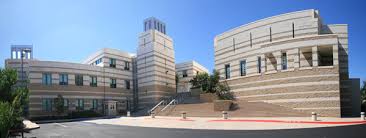 Elliot Feuerstein is an experienced real estate developer in San Diego, CA. Among his activities, Elliot Feuerstein previously served as a campaign co-chair of the Building Committee of the Congregation Beth Israel synagogue. The largest and oldest Jewish congregation in San Diego, Congregation Beth Israel traces its roots to 1861, when Jewish pioneers established a congregation they called Adath Yeshurun, which means Assembly of Israel in Yiddish. Its first synagogue was built in 1889 at Beech Street and Second Avenue. In 1926, the congregation vacated this synagogue and moved into its second synagogue, established at Third Avenue and Laurel Street. Today, the first synagogue resides in Heritage Park, where it is a San Diego Historical Site owned by the County of San Diego. Even with its second synagogue, Congregation Beth Israel eventually required more space for its devoted following. In 2001, it established its current temple in University City. A much more substantial home, one appropriate for the congregation’s 150-year history, Beth Israel’s current facility is twice the size of the second synagogue, with five buildings. Today, it serves approximately 3,500 individuals in San Diego.
0 Comments
 Based in San Diego, California, Elliot Feuerstein serves as an officer of Mira Mesa Shopping Center. A veteran of the retail real estate construction industry, Elliot Feuerstein is also a member of the International Council of Shopping Centers (ICSC). ICSC regularly conducts research to highlight the integral role of the retail real estate industry. In 2018, for instance, the organization commissioned research firm Alexander Babbage to perform a study on how brick and mortar stores impacted web traffic for retailers. For the study, titled “The Halo Effect: How Bricks Affect Clicks,” researchers looked at 800 stores in 145 US markets with a coverage of 222 million people. They also polled 4,000 people. Researchers found a very distinct relationship between opening retail stores and increased web traffic. For example, they found that after opening physical retail stores, emerging brands that were less than 10 years old saw, on average, a 45-percent increase in web traffic, while established brands over 10 years old saw an average of a 36-percent increase. On the other hand, when retailers closed stores, they suffered a decrease in web traffic. In one example, a retailer that closed one-third of its stores saw a 50 percent decline in web traffic in the affected areas. According to researchers, the symbiotic relationship between physical stores and web traffic was attributable to the advertising perks that stores offered. Physical stores act as free billboards that are always in consumers’ faces, giving presence and strength to brands. With such stores, consumers can engage with staff and try on new products, making the whole experience more real. |
AuthorSan Diego, California, Philanthropist Elliot Feuerstein. Archives
October 2023
Categories
All
|
 RSS Feed
RSS Feed
